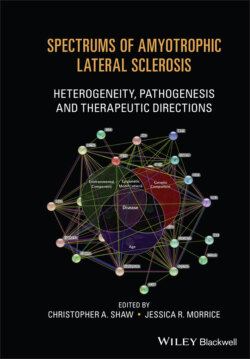Читать книгу Spectrums of Amyotrophic Lateral Sclerosis - Группа авторов - Страница 12
CLINICAL HETEROGENEITY OF ALS Familial and Sporadic ALS
ОглавлениеThe disease occurs sporadically in the majority of cases (sporadic amyotrophic lateral sclerosis [sALS]), and nearly 10% of patients have a positive family history (familial amyotrophic lateral sclerosis [fALS]) [3]. However, the dichotomy between fALS and sALS is less clear than previously assumed, since several clinical, pathological, and genetic observations support the view that they are linked with each other over a continuum. From a clinical point of view, patients with sALS are indistinguishable from those with fALS. Both conditions show similar pathological patterns – the presence of ubiquitinated TDP‐43 positive inclusions in neuronal cells – with the only exception being patients with SOD1 and FUS mutations in which the SOD1 and FUS proteins are detected, respectively [4]. Importantly, fewer than 50% of fALS patients show a clear Mendelian inheritance, usually autosomal‐dominant (definite fALS). In the remaining fALS cases, the genetic architecture is less clear as familiarity is assumed by the presence of a single relative with ALS beyond the propositus. These cases are defined as probable fALS when the affected subject is a first‐ or second‐degree relative and possible fALS when the subject is more distant than second‐degree. Finally, the most consistent link between sALS and fALS is the observation that all genes involved in fALS are invariably found to be mutated in patients with apparently sporadic disease [3]. Genetic variants in major ALS genes have been detected in about 15% of sporadic forms [5, 6].
